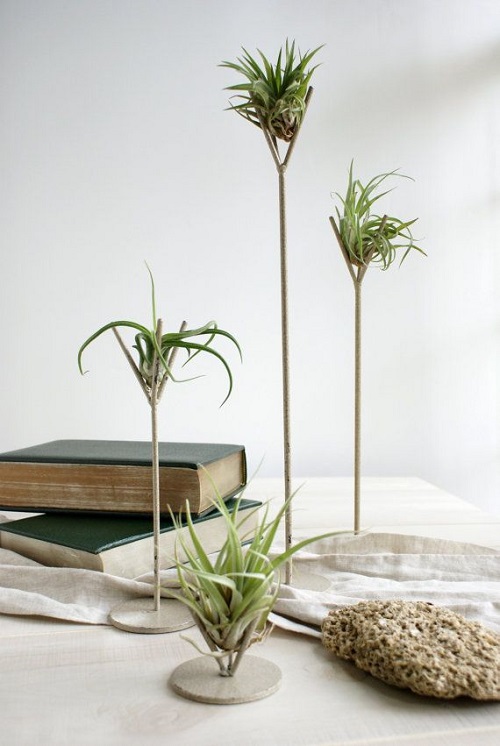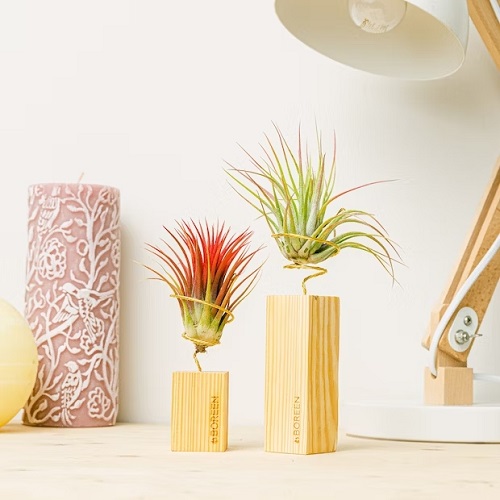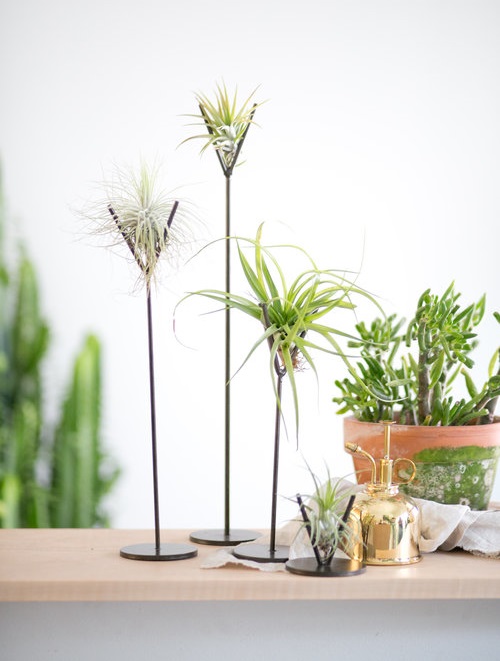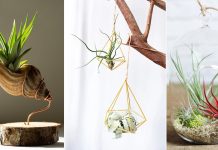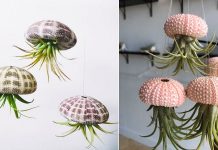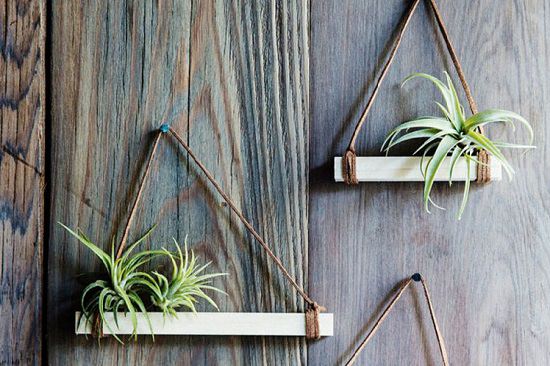Discover essential Air Plant Care tips and learn how to keep your Tillandsia healthy and thriving with this easy-to-follow guide.
Air Plant Care is crucial for keeping your Tillandsia healthy and vibrant. These unique plants don’t need soil but rely on air and minimal maintenance. In this guide, you’ll explore the essential steps to ensure your air plants thrive vigorously.
Explore Do All Air Plants Bloom here
Air Plants Information
Air plants, scientifically known as Tillandsia, belong to the Bromeliaceae family. They are native to diverse regions in North, Central, and South America. This epiphyte has slender, often grayish-green leaves and comes in various sizes and shapes.
Tillandsia typically grows slowly, reaching heights ranging from 2 to 12 inches. These plants produce small, tubular flowers in various colors, such as pink, purple, or red. Their foliage consists of thin, leathery leaves adapted for absorbing moisture and nutrients from the air. Tillandsias are epiphytic, meaning they grow without soil, attaching themselves to trees, rocks, or other surfaces.
Read About How Long Air Plants Live here
Air Plants Care
Sunlight
Air plants thrive in bright, indirect light. They should not be exposed to direct sunlight for extended periods, as this can lead to sunburn, especially in warmer climates.
Ideal locations include near a window with filtered or dappled sunlight or under fluorescent grow lights if grown indoors. Outdoors they can be placed in partial shade or areas with gentle morning sun.
Airflow
To keep air plants healthy, it’s crucial to provide them with proper air circulation. Air plants depend on their trichomes to soak up moisture and nutrients from the air. Make sure there’s good air movement around your Tillandsia for the best growth. You can position them in a spot with natural airflow or use fans to mimic a gentle breeze. This helps prevent too much moisture buildup, lowers the chances of rot, and maintains the plant’s well-being.
Water
Water air plant (Tillandsia) by misting or soaking them. Mist 2-3 times a week or soak for 20-30 minutes every 1-2 weeks, depending on humidity. Shake gently to remove excess water. Use non-chlorinated water. Adjust frequency to your specific environment, keeping them hydrated but not waterlogged.
Temperature
Air plants generally prefer temperatures between 10°C to 32°C. They can tolerate brief temperature drops but should be protected from frost or extreme cold conditions, as it can damage or kill them.
Explore 11 Amazing Benefits of Air Plants here
Fertilizer
Air plants require minimal nutrients. You can use a diluted, low-nitrogen, water-soluble orchid or bromeliad fertilizer to ensure their health. Apply it sparingly, about once a month, during the growing season (typically spring and summer). Make sure to rinse the plants thoroughly after fertilizing to prevent salt buildup.
Pests and Diseases
While air plants are relatively resistant to pests and diseases, they can occasionally be affected by mealybugs, aphids, or fungal issues. To address pests, gently remove them using a soft brush or a cotton swab dipped in alcohol. Isolate the affected plant to prevent the infestation from spreading.
To prevent fungal problems, ensure good air circulation, avoid over-watering, and allow the plants to dry thoroughly after watering.
Read About How Big do Air Plants Get here
FAQs- Air Plant Care
Q1: How often should I water my air plant?
A1: Water your air plant by misting or soaking it once a week, but adjust based on your environment’s humidity.
Q2: Can I use tap water for watering my air plant?
A2: It’s better to use filtered or rainwater as tap water may contain minerals harmful to air plants.
Q3: What’s the ideal lighting for air plants?
A3: Air plants thrive in bright, indirect light. Avoid direct sunlight, which can scorch them.
Q4: Do air plants need soil?
A4: No, air plants are epiphytes and don’t require soil. They attach themselves to objects for support.
Q5: How do I fertilize my air plant?
A5: Use a water-soluble, low-nitrogen fertilizer diluted to 1/4 strength and apply it monthly during the growing season.
Q6: Can I display air plants in decorative containers?
A6: Yes, you can place air plants in decorative containers, but ensure good air circulation to prevent moisture buildup.
Q7: What should I do if my air plant turns brown or dry?
A7: Soak the plant in water for a few hours, then resume regular care. Brown tips can be trimmed with scissors.
Q8: Are air plants pet-friendly?
A8: Air plants are generally safe for pets, but it’s best to place them out of reach to prevent accidental damage.
Q9: How do I propagate air plants?
A9: Air plants produce offsets or “pups.” Wait until they’re 1/3 the size of the parent plant, then gently separate and grow them separately.
Q10: What temperature range is suitable for air plants?
A10: Air plants prefer temperatures between 50-90°F (10-32°C). Protect them from freezing conditions.
Q11: Can I use a terrarium for air plants?
A11: While possible, ensure the terrarium has good airflow and isn’t sealed, as air plants require ventilation.
Q12: How long do air plants live?
A12: With proper care, air plants can live for several years and even produce blooms during their lifecycle.

